
photo : permission | courtesy Andew Renton
As a social scientist who studies curatorial work, I am fascinated by the number of different ways in which curators of contemporary art categorize their peers, including the “very institutional curators” (who spend years conducting detailed art historical research prior to an exhibition), “socially engaged curators” (who promote artists working for social intervention), and “experimental curators” or “animators” (who push the limits of exhibition design). There are curators who see their role as only to help artists realize their ideas, and curators who more explicitly create the conceptual context in which an artist’s work is seen. In the press, curators of contemporary art describe their work in a variety of ways, including: archivist, librarian, impresario, publicist, publisher, director, producer, social worker, DJ, and anthropologist, to name only a few. What happens, then, when curators with very different aims, backgrounds, and styles of working are thrown together, as in the case of guest curating in the museum setting?
The role of the curator has changed dramatically in the past thirty years. The museum, in contrast, is wedded to important historical beliefs about the role of the state in institutionalizing cultural heritage in perpetuity. There are, thus, enduring professional divisions between museum curators interested in the “objective” presentation of art historical knowledge, and guest curators who see their role as pushing the limits of display, interpretation, and exhibition design. This essay will discuss the tensions experienced by guest curators working in the museum setting, and argue that the consequences of these tensions are likely to be felt most deeply by museum audiences who may be left out of curatorial meaning-making entirely. But first, I will present a very brief history of curating to understand how the relationship between host and guest has evolved.

installing work by Jimmie Durham,
« A Stone from Metternich’s House in Bohemia » (1996),
Come, come, come into my world, Ellipse Foundation, Cascais, 2007.
photos : permission | courtesy Andew Renton

The curatorial profession became standardized in the nineteenth century, hand in hand with the advent of the modern museum. The museum was no longer to be a storehouse presenting miscellaneous collections of curiosities to learned scholars and collectors. Rather, the new mission for museums required display practices that framed collections to help others interpret meaning. The public was invited in.1 1 - Cf. Elizabeth Gilmore Holt, ed., The Triumph of Art for the Public: The Emerging Role of Exhibitions and Critics (Garden City: Anchor Books, 1979). Museum curators were indispensable in elaborating an artistic language key to this framing process: art history.
The second half of the twentieth century witnessed an escalating professionalization of the curator’s role, as the advanced study of art history became a prerequisite for entry into the profession throughout Western Europe and North America. With this professionalization came the development of conventions for museum display, and curators began to display artworks in a linear fashion within an overall historical perspective. This convention was widespread in the fine arts until the 1980s.
The 1960s and 1970s, however, saw the emergence of a new breed of curators, particularly in the European contemporary art world. Individuals like Harald Szeemann, Pontus Hulten, and others maintained an international presence, often moving from post to post in different countries while simultaneously engaging in freelance work. Rather than base their approach to exhibition making on art historical conventions, these curators engaged in critical curatorial practice, experimenting with the very nature of the exhibition format.2 2 - Cf. H. U. Obrist, ed., A Brief History of Curating (Zurich, Dijon: JRP/Ringier, Les Presses du réel, 2009; and H. Szeemann Écrire les expositions (Brussels: La Lettre volée, 1996). In other words, radical innovations in artistic practice were met by similar innovations in the conception and practice of curating.
As other sociological studies have described, instead of being codified by a Ph.D. in art history, expertise in contemporary art is defined largely by a widespread and current familiarity with the international art context.3 3 - Nathalie Heinich and Michael Pollak, “Du conservateur de musée à l’auteur d’expositions: l’invention d’une position singulière,” in Sociologie du Travail 31 (1, 1989): 29-49; Raymonde Moulin and Alain Quemin, “L’Expertise artistique,” in Confiance et Rationalité,” Francis Aubert and Jean-Pierre Sylvestre, eds. (Paris: INRA, 2001), 185-200. Indeed, by the turn of the millennium, the highly educated specialized background of museum curators began to be questioned in light of the growing institutional need to create entertaining events, connect with communities, increase one’s international visibility, and remain fiscally competitive with more “popular” cultural offerings.4 4 - Cf. Jean-Michel Tobelem, Le Nouvel Âge des musées: Les institutions culturelles au défi de la gestion (Paris: Armand Colin, 2005); Daniel Vander Gucht, “L’Institution muséale à l’épreuve du marché de l’art moderne,” in La mise en scène de l’art contemporain: Évaluation sociologique et analyse institutionnelle des manifestations artistiques, André Ducret, Nathalie Heinich, and Daniel Vander Gucht,eds. (Brussels: Les Éperonniers, 1990), 23-38. Like orchestra conductors, individuals in the new “breed” of CURATORS WERE sought out by institutions for their wide personal networks, charismatic social abilities, expertise on a particular subject, and powerful creative visions, rather than for an advanced degree in art history. And, on their end, the promise of fiscal stability is an attractive reason why these individuals began to take temporary positions at established museums and institutions of contemporary art. But, as I will now explore, guest curators face significant constraints when working in traditional museum settings.
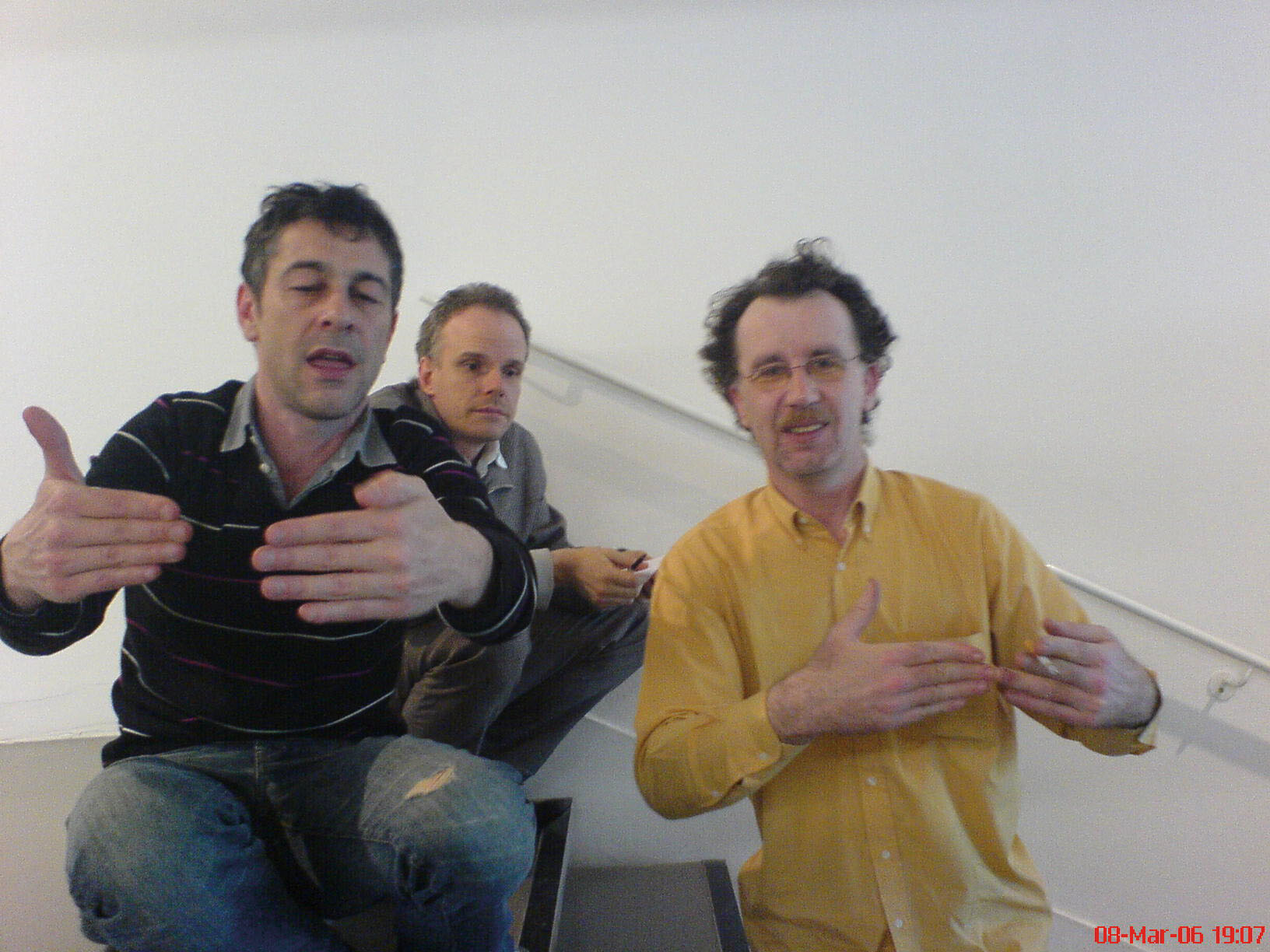
Pierre Huyghe: Celebration Park,
ARC/Musée d’Art Moderne de la ville de Paris, 2006.
Pierre Huyghe (gauche|left), Hans-Ulrich Obrist (centre|center),
technicien |technician, Société Porte (droite|right)
photo : Sophia Krzys Acord
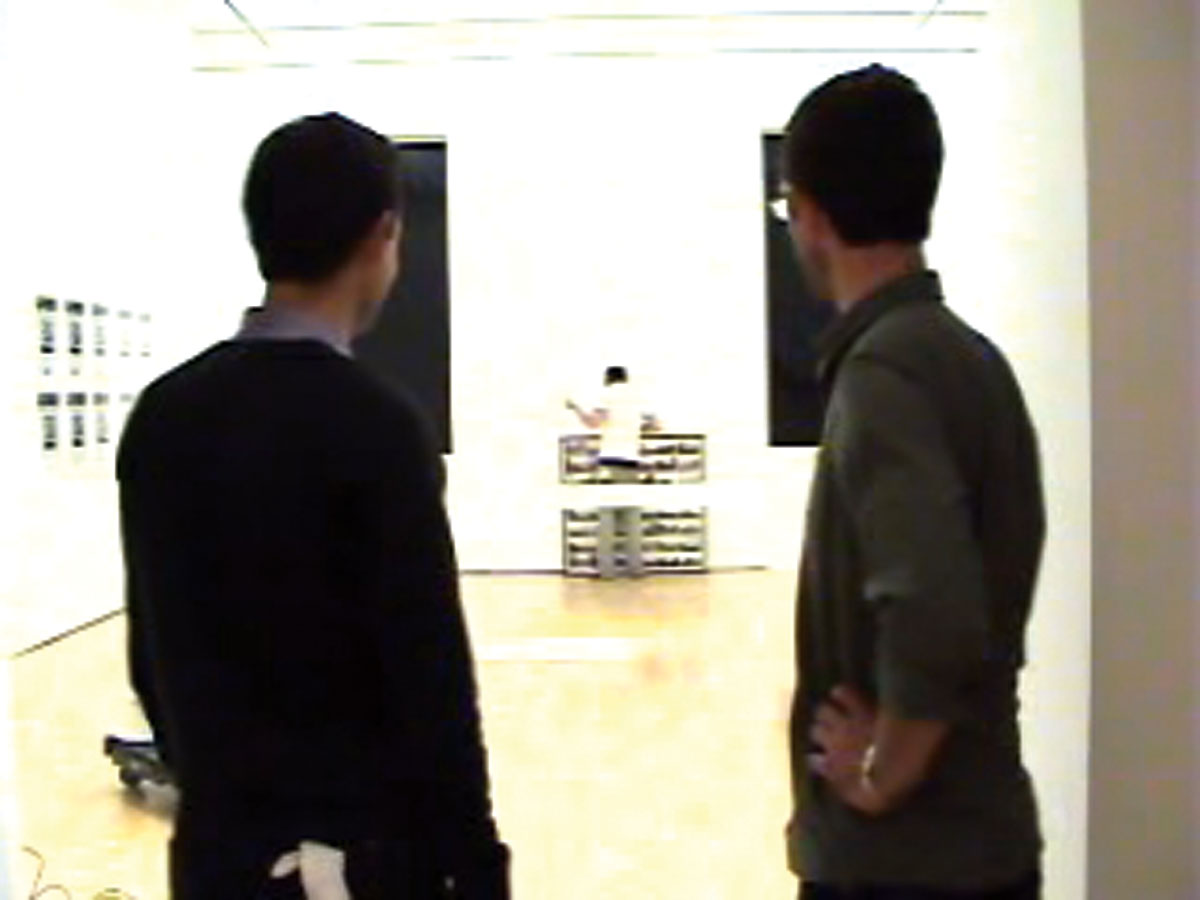
Jonathan Monk: Continuous Project Altered Daily,
Institute of Contemporary Arts, London, 2005.
Jens Hoffmann (gauche|left) & Jonathan Monk (droite|right)
photo : Sophia Krzys Acord
Guest curators plan temporary exhibitions, which can include choosing the theme and/or artists, and overseeing the installation and production of accompanying materials. Particularly in public museums, guest curators have to deal with a variety of external forces in the exhibition-making process. These include the taste expectations of exhibition sponsors and museum trustees, the administrative requirements of museums, and pressures for increased visitation and financial accountability. According to one internationally-recognized curator, “Sometimes I feel like Houdini…I have all of these handcuffs on me and I have to break them off to do my work.”5 5 - Interview with Jens Hoffmann, August 22, 2005, while Director of Exhibitions at the Institute of Contemporary Arts, London, UK.
In particular, there can be conflicts between the artistic goals of guest curators and the business requirements of museums focused on marketing a product to attract “middlebrow” visitors.6 6 - Cf. Victoria D. Alexander, Museums and Money: The Impact of Funding on Exhibitions, Scholarship, and Management, (Bloomington: Indiana University Press, 1996); and Vera L. Zolberg, “Conflicting Visions in American Art Museums,” in Theory and Society, vol.10 (1981): 103-125. According to another curator who manages a private collection in addition to his independent and educational work, “In museums, you have huge obligations to the audience. In particular, all of the texts are based on the concept of ‘over-explicitation.’ What I mean is that in museums, they tell people what it is. In contrast, here [the private collection], ‘It just is.’ We don’t have to spell it all out for the audience; they can just take what they want out of it. What’s funny is that the museum grew very much out of the tradition of the private collection, but with public funding comes audience obligations.”7 7 - Interview with Andrew Renton, October 28, 2005, in London, UK.
Despite the increased democratic mission of museums, the guest curator’s work is frequently aimed more at artists, peers, and the contemporary art world than the grand public.8 8 - Cf. Sylvie Octobre, “Rhétoriques de conservation, rhétoriques de conservateurs: Au sujet de quelques paradoxes de la médiation en art contemporaini,” in Publics et Musées, vol.14 (1999): 89-111. It is not surprising, then, that the educational functions of “spelling it out for the audience” are often given to other individuals in the museum.9 9 - Cf. Helen Charman, “Uncovering Professionalism in the Art Museum: An Exploration of Key Characteristics of the Working Lives of Education Curators at Tate Modern,” Tate Papers Spring (2005). In other words, guest curators become responsible for creating artistic meaning, but museum curators (and their assistants) become responsible for transmitting this meaning to general audiences.
This tension over audience “translation” is even more complicated by the disjuncture between traditional cultural tastes and some progressive contemporary art practices, like the Institutional Critique movement, that seek to question or attack museum conventions for display and mediation. As one very audience-aware curator told me, “The museum is the last bastion of public space…If we are to pretend that the museum has any role in democracy whatsoever, we absolutely have to get people to question the institution.”10 10 - Interview with Rob Bowman, October 21, 2005, while Curator of Exhibitions at the Institute of Contemporary Arts, London, UK. Yet, questioning the institution and disrupting exhibition formalities break the tacit, ritual conventions that allow the non-initiated to approach art. Hence, museum curators become responsible for what sociologist Nathalie Heinich terms “managing the irreconcilable,” negotiating the contradiction between the civic logic of institutions working in the public interest, and the contemporary artistic logic of transgressing established traditions, and challenging audiences to think critically about civic institutions.11 11 - Nathalie Heinich, “Des conflits de valeurs autour de l’art contemporain,” in Le Débat, No. 98 (1998): 72-86.
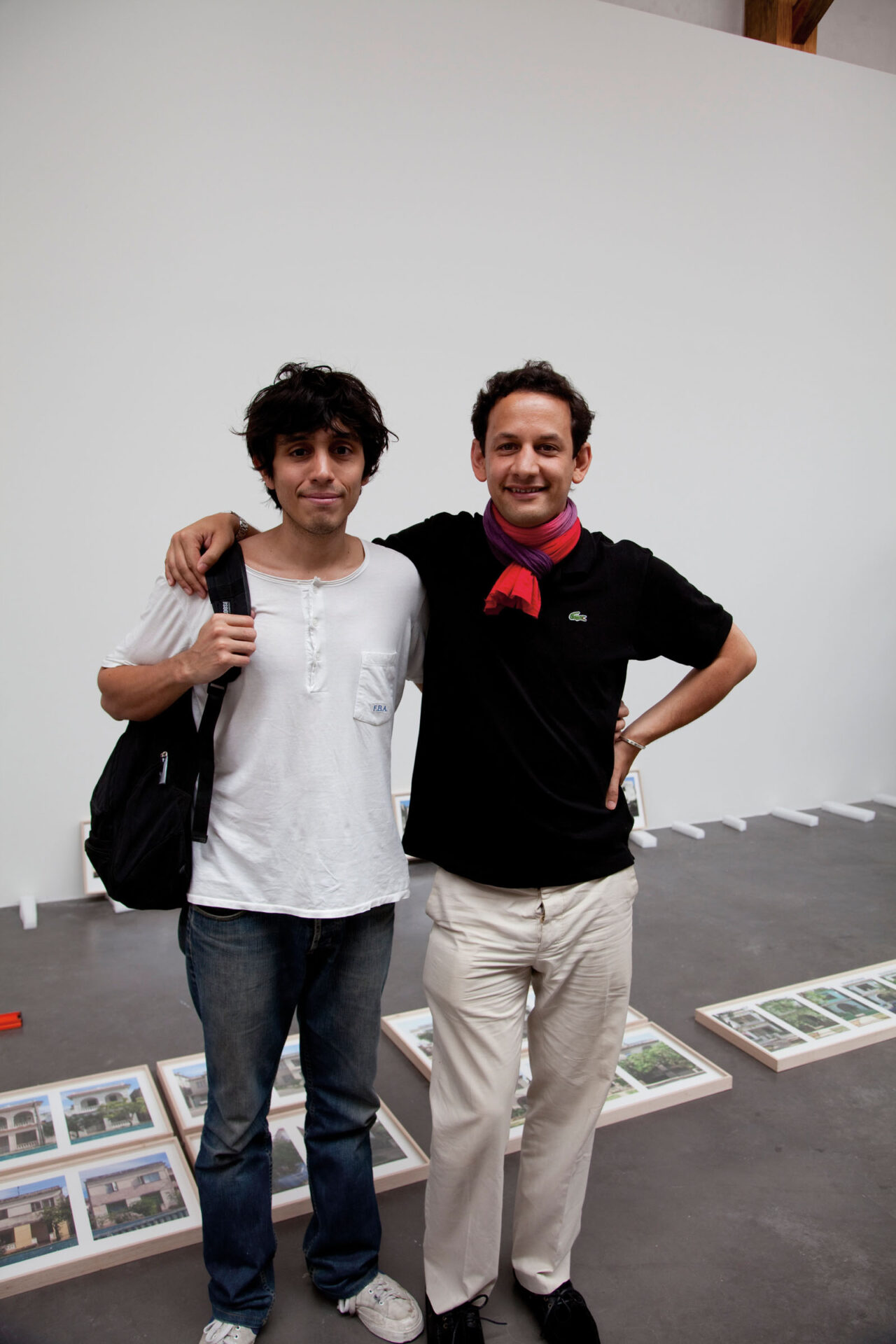
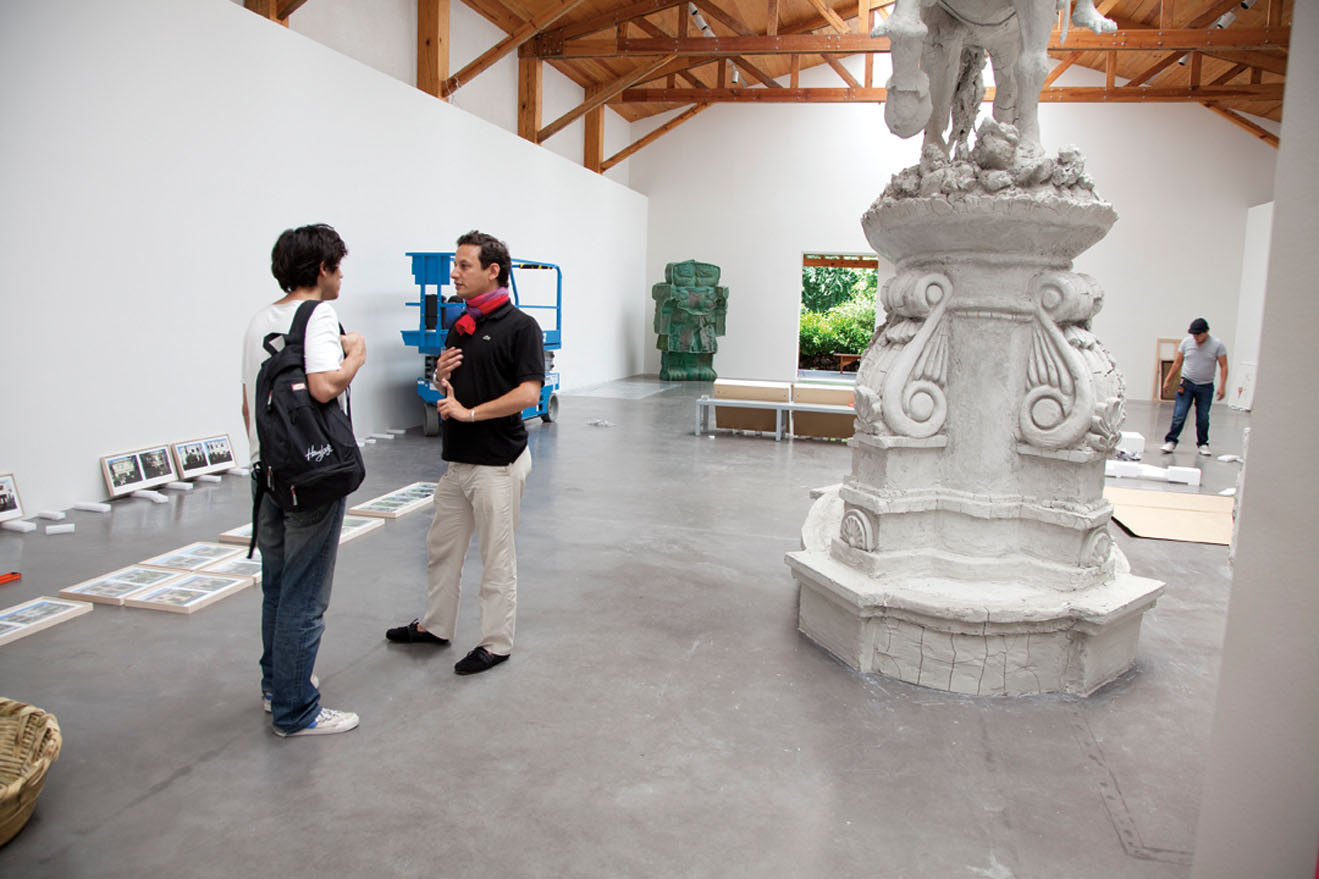
pendant l’installation de l’exposition |
during the installation of the exhibition PanAmericana,
Galeria Kurimanzutto, Mexico, 2010.
photos : Patricia Alpizar & Diego Pérez, permission |
courtesy Kurimanzutto, Mexico
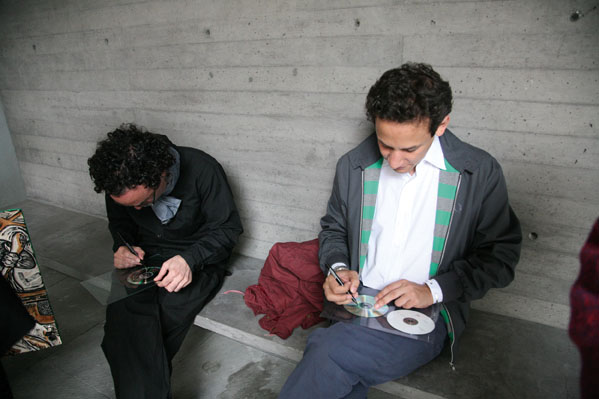
In addition, while a guest curator may make private choices about contemporary artworks informed by his/her personal taste and experience, s/he may have to justify this choice within museum conventions for the codification of artistic knowledge. Just like the negotiations faced by book editors, guest curators may ultimately have to mask their real intentions behind more “objective” criteria like the history of an artwork or its place in other museum collections.12 12 - Octobre, op. cit. This reference to institutional logics limits the kind of knowledge-making possible through temporary exhibitions.
On a physical level, guest curators are subject to the needs and spaces of other arts administrators in the museum. What they can exhibit is dependent upon the conventions of the space: no nudity or open flame, for instance. Additionally, most institutions commonly plan a year or more ahead and require curators to think about their budgets for painting and building at this time, which makes it difficult to commission new artworks or work spontaneously. Available time and manpower in the institution is also limiting, as technicians must be hired and scheduled for installations. And, of course, there are always the unanticipated and power-laden negotiations between guest and museum curators over “who pays?” for particular items and how certain creative decisions are made.
Finally, when curating a museum exhibition, a guest curator works with a variety of more traditional museum administrators, including museum directors, assistant or staff curators, and gallery managers. They are responsible for most of the logistical work in actually organizing the exhibition, including mediating between budget officers, galleries, press liaisons, technicians, printers, educators, and others. Although these individuals work to help the guest curator(s) realize their ideas, their primary allegiance is to the institution and its mass public. Consequently, the decisions made by others can impact the exhibition in important ways. Simply put: on an organizational level, guest curatorial authority is regulated and conventionalized by museum staff who actually carry out most of the practical and logistical tasks in exhibition-making. As I will now argue, the separation of labour between conceptual and practical work in guest museum curating can impinge dramatically on audience meaning-making in the exhibition.
As I have shown elsewhere, exhibition installation is unpredictable by nature.13 13 - Cf. Sophia Krzys Acord, “Beyond the Head: The Practical Work of Curating Contemporary Art,” in Qualitative Sociology, vol.33 (4, 2010): 447-467. (Available in Open Access) Guest curators may find their plans for the installation change considerably in the presence of the physical artworks. They may suddenly observe new relationships between artworks, change their minds about which artworks to install, and even re-think the concept of the exhibition based on new experiences and encounters. Yet, the deadline for all exhibition texts and signage precedes the installation by weeks. What results is a disjuncture between the physical exhibition and museum signage. This stems from a number of different factors.
First, the outcome of the exhibition installation may differ (in some cases significantly) from the curatorial texts written by the guest curator and others weeks earlier. Second, texts written by the guest curator may be significantly altered by museum assistant curators in order to improve “public comprehension.” Third, functional signage required by museum protocol (e.g., donor recognition, safety notices, wall labels, etc.) may interfere visually with one’s visit to the exhibition. Finally, and most importantly, last minute labels written by museum curators to explain the installation may reduce audience opportunities for meaning-making by trying to pin down something in words that may not yet be clear in mind.
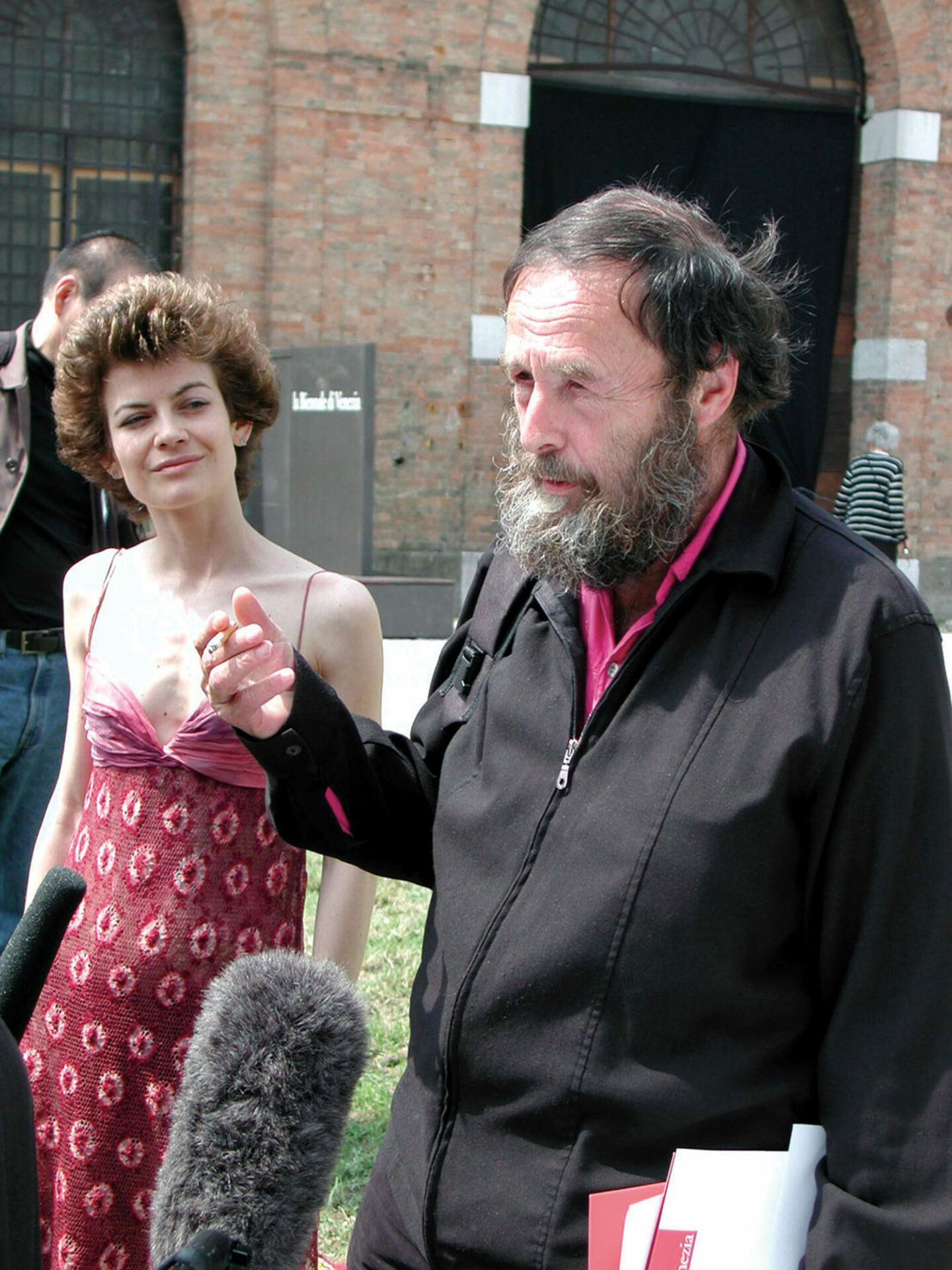

4 jours de performance
avec Harald Szeemann | 4 days performance
with Harald Szeemann,
Plato of Humankind, Biennale de Venise, 2001.
photos : Borut Krajnc, permission de l’artiste |
courtesy of the artist
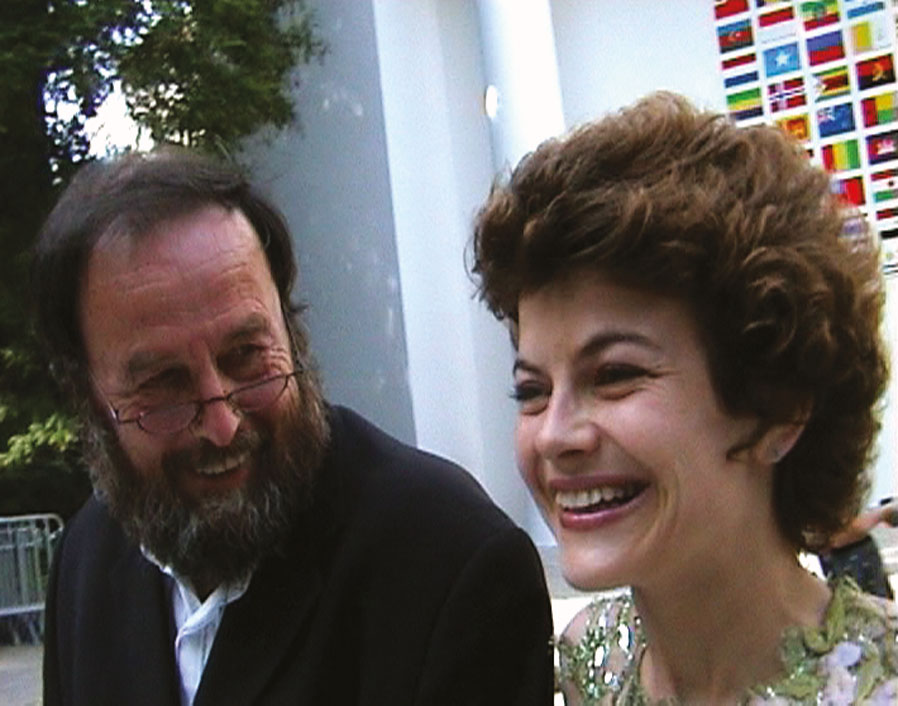
As we know from museum studies, what is made available to the public in the final exhibition provides subliminal or taken-for-granted cues about meaning and how it is to be conveyed. (The presence of a wall label next to an artwork, for example, implicitly suggests that it should be a port of entry for the viewer.) But, in this case, there may be an amount of slippage between the texts given to the visitor to make sense of the exhibition, and the physical exhibition s/he encounters. For example, curators install artworks based on semiotic as well as aesthetic factors (e.g., two objects could be placed next to each other because they “look good”) but, without this understanding, visitors might try to associate these two objects in a more substantive way.
It is the job of museum curators to use signage to make the exhibition as approachable as possible to members of the uninitiated public. But, in doing so, they risk distorting the visual experience of the exhibition and reducing more spontaneous opportunities for visitor meaning-making. Which is more confusing for the visitor: an under-explained guest exhibition, or one that is perhaps mis-explained?
To sum up the argument I have been developing, the guest curator emerged as an important character in the contemporary art world for a variety of reasons, including the rise of the temporary exhibition for attracting museum visitors, the need for highly networked individuals to keep abreast of emerging artists, and the importance of non-historical approaches in valorizing contemporary art. These individuals, however, are confronted by a variety of practical constraints when working in the museum setting. The conflict between guest and museum curator ultimately impacts upon audience comprehension, by literally sending mixed messages in the physical exhibition.
This “sociological” conclusion echoes past critical work in cultural theory, such as by Paul Valéry, who argues that the museum, in its very institutional nature, literally “kills art.”14 14 - Paul Valéry, “Le Problème des musées,” in Pièces sur l’Art (Paris: Maurice Darantiere, 1931), 149-156. As Martha Rosler later writes, it does this by enforcing a “passivity of relationship” between art/artist and public through its emphasis on the commodity status of art and art’s relationship to art world (rather than societal) structures.15 15 - Martha Rosler, “Lookers, Buyers, Dealers,” Art After Modernism: Rethinking Representation, Brian Wallis, ed. (New York: The New Museum of Contemporary Art, 1984), 211-339. On the other hand, Arthur Danto notes that it is merely the fact that people can create meanings with artworks that justifies putting them in the museum.16 16 - Arthur C. Danto, After the End of Art: Contemporary Art and the Pale of History (Princeton: Princeton University Press 1997). But in this case, the museum institution may prioritize its own meaning-making over that of its visitors.
As Jean-Michel Tobelem outlines in his text on the “new age of museums,” the viewer in contemporary art increasingly plays a more active role in “elaborating” the exhibition experience by drawing on his/her personal knowledge and resources.17 17 - Tobelem, op. cit. Rather than offering scripted knowledge of the exhibition in the form of extensive viewing notes, then, curators could give visitors more independence to explore the exhibition on their terms and seek additional information outside if they like. In this way, perhaps museum and guest curators can begin to collaborate more creatively and better serve diverse audiences.
